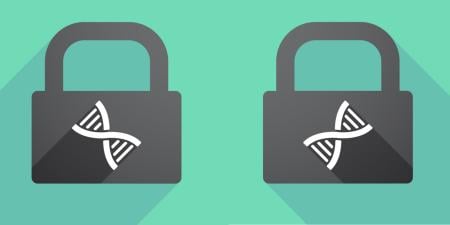Medicine, like law, is sometimes referred to as a “conservative” profession, as both can change slowly, stifling innovation [1]. While the art of medicine has produced important advances, there is at least one part of medicine that has not changed much in more than 100 years. Nearly all American medical schools have followed much the same educational model since Abraham Flexner published his famous report on the state of American medical education in 1910 [2]. The educational model promoted by that report emphasizes teaching students the science of medicine, but it is not well equipped for teaching students about the practicalities of medicine or for helping trainees adapt to circumstances that are radically different than those faced by physicians 100 years ago. This essay discusses one feature of modern medical practice that deserves more attention in medical educational curricula: the legal framework that situates and influences medical practice for all physicians and physicians-in-training.
The Current Place of the Law in Medical Education
Medical practice today is subject to a multitude of legal rules, both state and federal. Yet, medical students may have next to no knowledge about the existence of these rules, much less their scope or application. Indeed, when medical students hear the word “lawyer,” their train of thought might start and stop with medical malpractice. Rarely, in our experience, are issues such as compliance or insurance fraud and abuse presented to medical students. Nor are students exposed to legal problems that might be the underlying causes of the maladies that their patients suffer, such as when “a child’s chronic asthma is exacerbated by mold or other toxins in his apartment” [3].
Law students and medical students rarely interact, even within universities that have both law and medical schools [4]. Even when medical schools, such as Johns Hopkins University or Stony Brook University, offer courses introducing students to selected legal concepts, these courses can be regarded by some students as superfluous. This is not to blame medical students or their educational institutions. Understandably, when securing a career in a chosen medical specialty does not depend on a student’s knowledge of the intersections between medicine and law, that knowledge will be given short(er) shrift by students. At the same time, judging by reactions we have observed while teaching legal issues to medical students, these students are very interested in learning more about the legal system and the effect it has on their personal and professional lives. Students may fear the consequences of “being sued”—especially the risk of losing their hard-earned medical licenses—and yet have little opportunity in the traditional medical school curriculum to learn about the process of litigation and the pitfalls for the unwary that may be inherent in the process itself. Our efforts aim, among other things, to help students better orient themselves to the intersections between law and medical practice and about the differences and similarities between medical and legal approaches to medical mistakes and negative medical outcomes.
Two Schools’ Efforts to Promote Medical and Legal Students’ Collaborative Learning
With these problems in mind, the University of Baltimore School of Law and the Johns Hopkins School of Medicine experimented with different ways to integrate legal content into medical education curricula. What we realized in teaching this content is that, in order to have any sort of lasting impact on students, the legal components of the curriculum must be no different than the medical components—that is, they must involve “hands-on” or “clinical” learning. We began by teaching medical malpractice because, again, this is the most familiar issue to medical students.
However, in addition to a lecture on the legal standards in medical malpractice litigation (which Johns Hopkins students continue to receive), we tried to put together a course that would simulate an actual malpractice case from beginning to end. To that end, we created a semester-long optional course offered to both medical and law students that combined classroom instruction with “hands-on” training. The goal of this course for medical students was to help them integrate legal concepts into their applications of medical knowledge and practice of clinical judgment. Similarly, the goal of the course for law students was to help students learn and appreciate how medical knowledge could inform their legal judgment and strategies as attorneys. Of course, litigation is just one of many legal concepts that medical students might benefit from learning more about. In addition, legal matters including contracts, risk management, scope of practice, and the like would make fertile ground for further medico-legal collaborations. But, as with any new project, this one started with a single proof-of-concept trial: the medical malpractice course.
At the University of Baltimore, the medical malpractice litigation course is taught by three people: a practicing attorney and adjunct professor, a full-time law professor, and a full-time physician. The course centers on a real-life case that one of the instructors litigated in the Maryland state courts. Early in the course, the medical file containing the real (albeit anonymized) patient’s chart, test results, physician notes, prescriptions, and other health records is distributed to all of the course participants—both medical and law students. As the course progresses, we encourage the law students to meet and communicate with their medical counterparts to figure out what to make of the patient’s file. The medical students, in turn, learn what will be expected of them in their assigned roles—serving as either expert witnesses or the defendant.
Curricular Focus on Litigation as One Important Legal Process in Medicine
Throughout the semester, medical and law students learn not only the governing law for medical malpractice litigation, but also the process of litigating a medical malpractice case. What we have consistently heard from medical students, residents, and even attending physicians is that they are bewildered by the very process of litigation and do not understand why a case takes certain twists and turns. By teaching the medical student participants in the course the typical main events in a litigation process, we hope to demystify the process and make the students more familiar, and thus, more comfortable with it. Accordingly, we have guest lecturers throughout the semester who discuss settlement negotiations, case evaluations from the perspective of both a plaintiff’s attorney and a defense attorney, and testimony preparation. In order to maintain relevance to medicine, we also have lectures on how hospitals deal with medical mistakes, focusing on processes such as morbidity and mortality conferences, root cause analyses, and protocol creation. We intend that law students, in turn, will gain an appreciation for and understanding of how medical processes react to unexpected (or negative) outcomes within the hospital setting, how to gain knowledge from medical actors, and how to make use of that knowledge during settlement negotiations, trial preparation, and during trial itself.
Towards the end of the semester, the medical and law students participate in a mock deposition based on the medical file, applying skills they were taught in lecture. Among other things, students should have learned the mechanics of civil litigation depositions, as well as how to make use of a medical file to the advantage of a client (and the truth). Like a real deposition, the mock one is time limited (albeit significantly more so than is permitted under the relevant procedural rules) and recorded on video. Law students are expected to have gained an understanding of the medical facts of the case through reading the file and talking to their medical counterparts. Medical students are expected not only to know the medical facts of the case, but also to think about how their videotaped testimony would play to a jury.
Once the students have completed their depositions, the instructors role-play a sample deposition for all the students to see. Both the medical and law students get to experience in real time how a deposition can be used to aggressively pursue the interest of the client while maintaining a professional and courteous decorum. The video recordings of these depositions are available for further student reflection in preparation for later portions of the course.
The course culminates in a daylong mock trial presided over by a Maryland state judge. A jury of volunteers, composed mostly of undergraduate (i.e., college) and graduate (but neither medical nor law) students from the University of Baltimore is assembled or, in the legal vernacular, “empaneled.” The law students put their expert witnesses on the stand and conduct direct and cross-examination. The medical students play the roles of the expert witnesses and explain both the medical facts of the case and their opinions about the care the patient received to the lay jury. Based on these efforts, the jury ultimately renders a verdict. Unlike a real trial, the mock jury is then asked to explain its verdict to all of the participants and discuss how it was reached. This explanation helps elucidate for students what portions of their questioning (for the law students) and responses (for the medical students) had the greatest impact, and why. Such information can be invaluable for learning more about successful litigation practice and about what factors can help make medical professionals better or worse experts to a lay audience.
Course Outcomes, Challenges, and Next Steps
We have offered this course now for two years, and both times, judging by student evaluations and comments received from both the medical and law students, it has been a resounding success. Indeed, it has been so successful that we are developing another course to further facilitate the interaction between medical and law students.
We hope to create a course enabling law students to visit the local health clinics where the third- and fourth-year medical students do their rotations. The law students would shadow social workers while the medical students shadow their physician preceptors. Together, the students would seek to identify patients for whom legal difficulties are the underlying cause of medical problems (for instance, a landlord’s failure to remedy mold, resulting in respiratory disease). The students would then learn what their possible roles could be in addressing those problems. For instance, a practicing attorney might represent a patient by preparing a letter to a landlord that seeks to remedy a mold situation in the home and identifying for the patient further legal actions that might be taken. A physician could facilitate this role both by connecting the patient and the attorney and by providing a medical opinion as to the etiology of the patient’s respiratory disease.
Although successful, our attempts to integrate more legal education into the medical education curriculum have not been without challenges. Perhaps the most significant barrier to these joint courses is that medical students and law students work on radically different schedules. Whereas most law school classes conform to a traditional semester schedule, medical curricula operate on a schedule of much shorter modules. As a result, although interest in our medical malpractice litigation course has always been high (given that every year the class is at capacity), the actual number of medical students able to participate has been quite low. Instead, we have had to supplement our medical participants with residents and fellows. For the same reason, one of the problems we are encountering in creating the clinic-based course is that a rotation to which it could theoretically be attached lasts only four weeks—a period much shorter than a full law school semester.
What we’ve learned from our—admittedly anecdotal, yet consistent—experience is that medical students seem to want more exposure to legal aspects of medicine. Since legal issues will affect how this generation of students will practice their art [5], legal education opportunities in medical curricula should be expanded.
The current model of medical education has little, if any, room for opportunities to learn about the legal system. Students have neither the time nor the incentive (absent academic credit or personal and professional interest) to devote their energy to exploring these issues and collaborating with their nearby legal peers. But if medical and law schools were to work to create more options for crosslisted courses and to think outside the box about how to schedule and structure offerings that would allow students to do more than just sit through another lecture, students (both medical and law) would likely jump at the opportunity. What is more, the lessons learned from such experiences would likely remain with students for much longer than even the most riveting single lecture on “law and medicine.”
Medicine and law are indeed “conservative” fields, changing slowly and sometimes only with great difficulty. The scope of medical education is but one example. But today’s medical students need and seem to want innovative approaches to teaching content beyond lectures on the basic sciences of medicine. With some creative thinking and role playing, medical students’ legal knowledge can be developed and, more importantly, retained and later applied. Such an outcome would greatly benefit our health care system as a whole.
References
-
Bridy A. Confounding extremities: surgery at the medico-ethical limits of self-modification. J Law Med Ethics. 2004;32(1):148-158. The regulatory ethics paradigm can “function counterproductively by stifling innovation in clinical practice” (155).
- Ludmerer KM. Commentary: understanding the Flexner Report. Acad Med. 2010;85(2):193-196.
- Wettach JR. The law school clinic as a partner in a medical-legal partnership. Tenn Law Rev. 2008;75306-
-
Wettach, 306. Most pediatric medical-legal partnerships, whose growth can be dated from the mid-1990s, “are partnerships between hospitals and local legal aid offices,” while a minority involve law school clinics.
-
For instance, modern modifications in the law of negligence and informed consent may bring physicians into closer and more frequent contact with long-standing doctrines in this area. See, e.g., McQuitty v Spangler, 976 A2d 1020 (Md Ct App 2009), which holds that informed consent doctrine extends to medical decisions, not just medical procedures.



